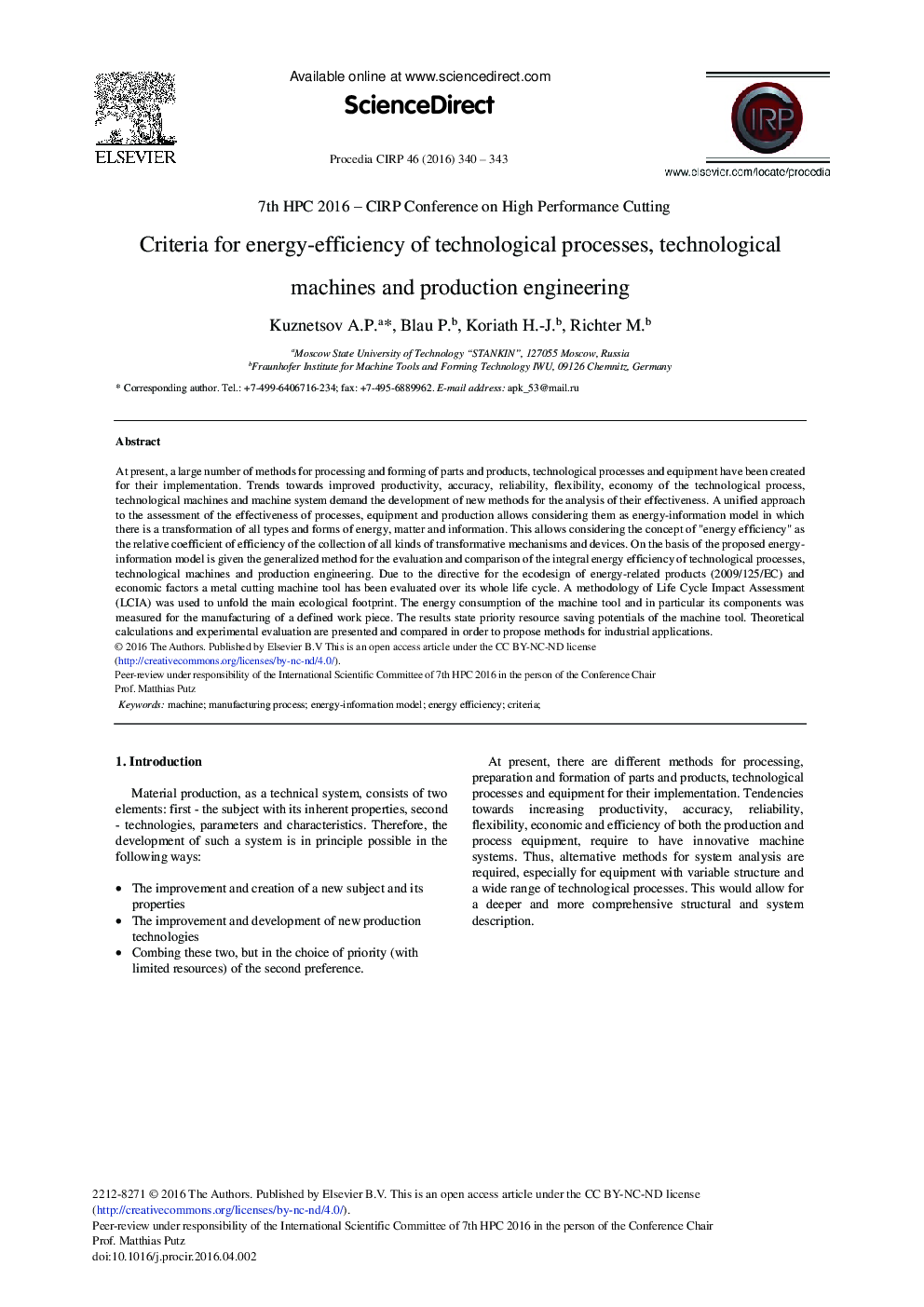| Article ID | Journal | Published Year | Pages | File Type |
|---|---|---|---|---|
| 1698438 | Procedia CIRP | 2016 | 4 Pages |
At present, a large number of methods for processing and forming of parts and products, technological processes and equipment have been created for their implementation. Trends towards improved productivity, accuracy, reliability, flexibility, economy of the technological process, technological machines and machine system demand the development of new methods for the analysis of their effectiveness. A unified approach to the assessment of the effectiveness of processes, equipment and production allows considering them as energy-information model in which there is a transformation of all types and forms of energy, matter and information. This allows considering the concept of “energy efficiency” as the relative coefficient of efficiency of the collection of all kinds of transformative mechanisms and devices. On the basis of the proposed energy-information model is given the generalized method for the evaluation and comparison of the integral energy efficiency of technological processes, technological machines and production engineering. Due to the directive for the ecodesign of energy-related products (2009/125/EC) and economic factors a metal cutting machine tool has been evaluated over its whole life cycle. A methodology of Life Cycle Impact Assessment (LCIA) was used to unfold the main ecological footprint. The energy consumption of the machine tool and in particular its components was measured for the manufacturing of a defined work piece. The results state priority resource saving potentials of the machine tool. Theoretical calculations and experimental evaluation are presented and compared in order to propose methods for industrial applications.
